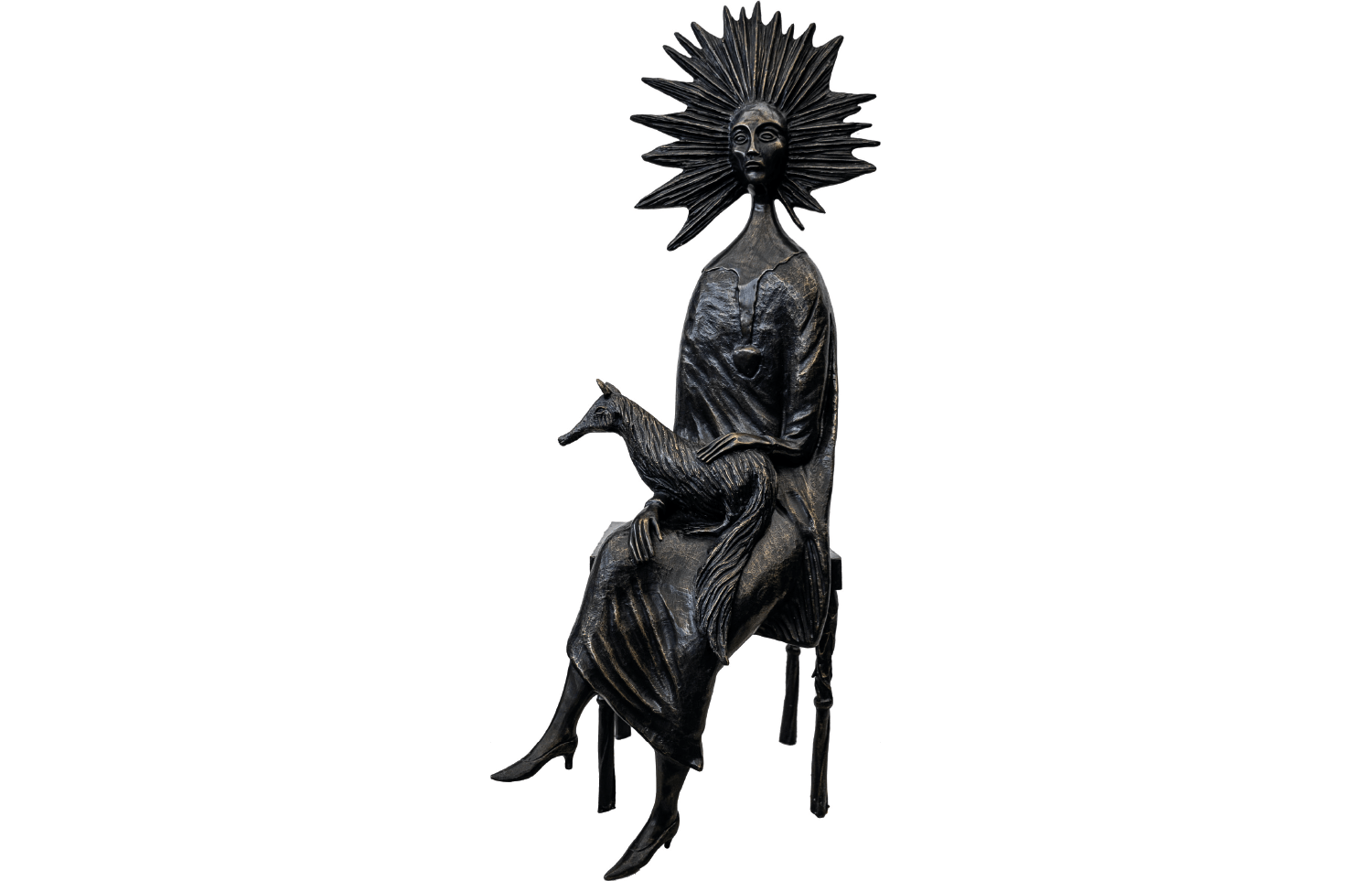‘It had nothing to endow it with the title of studio at all,’ was Edward James’s first impression of Leonora Carrington’s Mexico City workspace in 1946. ‘The place was combined kitchen, nursery, bedroom, kennel and junk store. The disorder was apocalyptic: the appurtenances of the poorest. My hopes and expectations began to swell.’
Carrington blended Egpytian, Mayan, Mesopotamian and Celtic legends learned at her nanny’s knee
Over six decades in the creative chaos of this house on Calle Chihuahua, Carrington would paint some of her best-known works and write her quirky serio-comic novella The Hearing Trumpet, which is narrated by a 92-year-old woman. If you want to understand Carrington’s art, read her stories: to get the full picture you need to hear that posh authorial voice, as insouciantly piquant as a hat pin – a tone instantly recognisable in the filmed interview with the nonagenarian artist that closes Newlands House Gallery’s current exhibition.
Most of the work in this show, curated by the artist’s cousin and biographer Joanna Moorhead, is late; there are some early drawings, including a delightful watercolour of a dragon and a princess painted in her teens, but many of the images are lithographic reproductions of earlier paintings made before the artist’s death in 2011. There are also tapestries (see below) woven to her designs in the 1950s, when she moved a family of Serape weavers into the house, and bronzes of figures featured in earlier paintings, cast with the help of assistants when she could no longer paint. Her paintings will be represented in a show at Firstsite, Colchester, next month; this exhibition provides an illustrated introduction to a fascinating life story, compellingly told by Moorhead.

The story follows the escape of the 20-year-old convent-educated, twice expelled aspiring artist from the ‘cattle market’ of the London season in 1937 into the arms of the twice married Max Ernst, her subsequent welcome in surrealist circles in Paris and her wartime retreat with Ernst to a farmhouse in Saint-Martin-d’Ardèche bought with money sent by her mother after her father disowned her.








Comments
Join the debate for just £1 a month
Be part of the conversation with other Spectator readers by getting your first three months for £3.
UNLOCK ACCESS Just £1 a monthAlready a subscriber? Log in